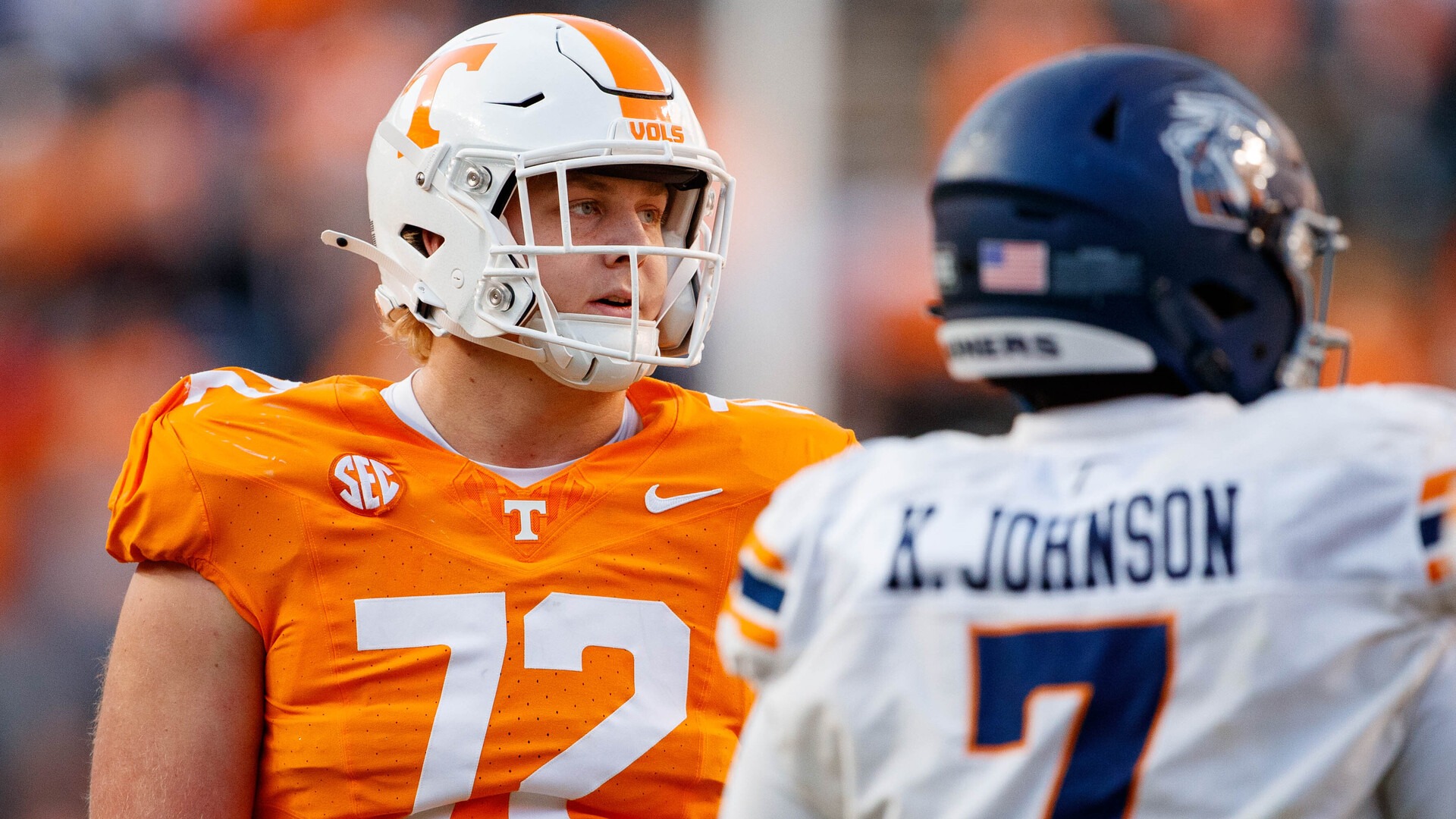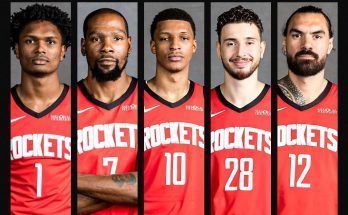Arion Carter Offers Analysis of Colton Hood, a Transfer Addition for Tennessee Football
Colton Hood’s collegiate path is a compelling backstory of perseverance and strategic progression. A Georgia native, Hood initially committed to Auburn in December 2022, playing four games there in 2023 before seeking more playing time. He transferred to Colorado in April 2024 and starred under coach Deion Sanders. In the 2024 season, Hood took the field in all 13 games, notched 24 tackles, grabbed two interceptions, and broke up six passes
What makes Hood’s 2024 tape truly stand out: over 215 coverage snaps, he didn’t allow a single touchdown, and opposing quarterbacks posted a mere 51.7 rating when targeting him). That’s elite-level performance for a player often shadowing top-tier receivers.
Such efficiency in coverage, combined with experience in a high-level Power‑4 program, make Hood a high-value asset as he returns to the SEC with three years of eligibility left .
What drew Hood to Tennessee wasn’t just geography—it was the allure of the Vols’ culture and defensive identity. Multiple reports highlight Hood emphasizing his comfort with Tennessee’s “genuineness” in the coaching staff—Heupel, Banks, Martinez—and the university’s culture. For a player positive, mature, and seeking reliability, that authenticity clearly mattered.
Defensive Coordinator Tim Banks and cornerbacks coach Willie Martinez were reportedly enthusiastic about Hood’s skill set, even before he officially joined. They see him as a plug-and-play option, capable of both press man and off-man coverage roles—ideal for Tennessee’s versatile secondary (
Hood’s choice also came down to proximity—Georgia is much closer than Colorado—and the chance to compete immediately in the conference known for producing NFL talent (
By the numbers and on tape, Hood brings several elite traits:
a. Lockdown Coverage
Hood didn’t allow a touchdown over 215 coverage snaps—a rare feat That mirrors NFL-caliber lockdown coverage and matches Tennessee’s schematic need.
b. Ball Skills
His two INTs and six PBUs in 2024 show a player with strong awareness and handsHe returns picks effectively too—Colorado had 105 total return yards on his interceptions
c. Physical Tools & Competitive Edge
At 5’11″ and 190 lbs, Hood plays bigger than his frame suggests. Colorado PFF film analysts praised his elite press technique: square stance, patient footwork, and locking receivers down (
d. Durability and Experience
He played in every game at Colorado and avoided injuries, making 13 appearances — a good sign of both resilience and availability .
Summing up, he checks multiple boxes: coverage, playmaking, physicality, and experience—all essential for an SEC secondary.
Tennessee’s secondary took hits last season: injuries, graduations, and departures thinned depth. Cornerback Jerod McCoy will miss start of 2025 due to ACL rehab. Departed players like Jakobe Thomas and Jalen McMurray leave room in the rotation
The Vols need proven backups and veteran leadership behind McCoy, Gibson, and Beasley. Hood’s arrival brings immediate quality—and credible competition for the starting slots
Tennessee has built a “speed‑on‑offense, strength‑on‑defense” identity. Players like Arion Carter emphasize internal competition and cultural excellence (On3). Hood’s character-driven decision aligns well with that locker room ethos.
Linebacker Arion Carter has grown into a vocal and cerebral defensive leader, dominating in preparation and film study since his freshman season. The coaching staff praises the “night‑and‑day” leap he’s made in pre‑season readiness .
Carter and fellow defenders thrive when the secondary gives them confidence. Hood enhances that foundation: elite coverage brings mental security—linebackers aren’t left worrying over-the-top—even more, in SEC matchups.
Tennessee’s “iron sharpens iron” approach keeps the team fresh at top speed (On3). Hood’s arrival provides a fresh, experienced voice who can mentor younger cornerbacks during drills and meetings.
Expect Hood to open the fall as a top-three corner alongside McCoy and Gibson, possibly earning starter reps early, especially with McCoy’s rehab timeline (
Hood’s proficiency in man and press schemes suits Tennessee’s matchup-heavy approach. He’ll likely follow opposing WR1/WR2 while SEC rivalries—like Alabama and Georgia—dial in their routes.
With his pass breakup and interception track record, Hood could lead Tennessee CBs in turnovers—a momentum swing player in tight, high-stakes games.
UW coach Martinez can deploy Hood as a lead educator on the field: setting external pre-snap coverage, aligning the secondary post-snap, communicating adjustments, and mentoring rising talent.
With three years left, Hood offers continuity. As current seniors depart in 2026–27, Tennessee can anchor one CB spot with his experienced presence.
No player is flawless—even elite ones bring some risk:
- Height/Length Concerns
At 5’11”, he isn’t tall. While press technique mitigates this, vertical threats remain a matchup concern. The coaches must scheme to help. - Adjustment to SEC Offenses
Colorado’s schedule under Deion was potent, but the SEC offers game-plans built around SEC receivers. Hood needs to demonstrate adaptability at this higher tier. - Chemistry with Safeties/Linebackers
Secondary communication and cohesion are critical—especially with Carter using scheme-wide adjustments. Building rapport early in camps will be key.
Tennessee has thrived by mixing high-upside transfers and blue-chip recruits. Hood’s success could help continue this cycle.
Hood replaces outgoing starters, providing coverage leadership and freeing coaches to deploy redshirt-freshmen gradually. A savvy strategic move.
If Hood replicates his Colorado form, he becomes an NFL draft prospect—a valuable recruiting and retention signal for Tennessee’s defensive program.
From defensive coach to linebacker, Arion Carter has molded Tennessee’s identity through speed, intelligence, and leadership. Adding Colton Hood amplifies those pillars:
- Speed — Hood moves like a fast safety, keeping tough matchups in check.
- Strength — Mental fortitude and press coverage presence.
- Leadership — His character complements Carter’s defensive governance.
- Playmaking — Turnover potential built into every gameplan.
In Tennessee’s evolved defensive framework, Hood is more than depth—he’s an elevation. The Vols now own one of the strongest corner rooms in the SEC through 2027. If Hood produces early, Tennessee’s secondary could stand as a top-three unit in the conference—and that’s no small feat.
Colton Hood arrives as a foundational defensive piece—a player ready to elevate Tennessee’s pass defense. From his journey through Auburn and Colorado to his fit within Tennessee’s established culture, Hood checks the boxes that defensive catalysts require. As Arion Carter and the Vol defensive hierarchy push for greater symbiosis and excellence, Hood’s presence provides both immediate impact and long-term benefit—for the defense, the program, and Tennessee’s next chapter.



